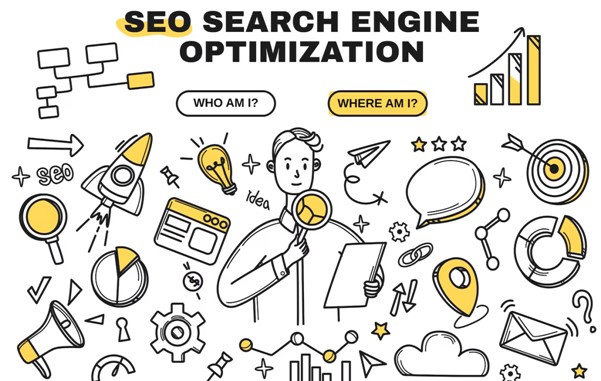Crafting SEO Campaigns That Speak to Diverse Audiences

In today’s globalized digital landscape, the ability to connect with diverse audiences is a hallmark of a successful SEO campaign. As businesses strive to reach individuals from various cultural, linguistic, and demographic backgrounds, traditional SEO strategies may fall short. Crafting campaigns that resonate across a spectrum of audiences requires a combination of technical expertise, cultural sensitivity, and creative adaptation. This article explores the steps needed to build effective SEO campaigns tailored for diverse audiences, highlighting the importance of inclusivity, adaptability, and strategic planning.
Understanding the Importance of Audience Diversity
Diversity in SEO isn’t just a moral or ethical consideration—it’s a business imperative. Internet users represent a vast array of cultures, languages, and socioeconomic backgrounds. Ignoring these factors can lead to campaigns that feel out of touch or exclusionary. Tailoring your strategy to accommodate diverse audiences ensures a broader reach, increased engagement, and stronger brand loyalty.
An inclusive SEO strategy goes beyond translating keywords; it focuses on understanding cultural nuances, regional search behaviors, and how various demographics interact with digital content. For example, search habits in Europe differ significantly from those in Asia or South America, and even within a single country, variations in language, dialect, and preferences can impact results.
Researching Your Target Audience
The cornerstone of any effective SEO campaign is comprehensive audience research. Begin by identifying the demographics, geographics, and psychographics of the audience segments you aim to reach. Consider the following factors:
- Language Preferences: Determine whether the audience is monolingual, bilingual, or multilingual. For multilingual campaigns, asking for multilingual SEO consultancy can ensure precise keyword localization and culturally relevant content.
- Cultural Context: Different cultures interpret language, symbols, and imagery uniquely. Avoiding cultural missteps requires thorough research into local customs, traditions, and values.
- Search Behavior: Search engines dominate globally, but the way people use them varies. For example, users in some regions rely on long-tail keywords, while others favor broader terms.
- Platform Popularity: While Google reigns supreme in many parts of the world, platforms like Baidu, Yandex, or Bing may hold significant sway in specific regions. Social media platforms also vary by country, making it vital to optimize content accordingly.
Optimizing Content for Multilingual Audiences
Content is at the heart of any SEO strategy, but its effectiveness hinges on its relatability to the target audience. Crafting content for diverse audiences involves several steps:
- Translation vs. Localization: Direct translations often fail to capture the cultural essence of a message. Localization ensures content resonates by adapting phrasing, tone, and context to match cultural expectations.
- Keyword Research in Local Languages: Conduct keyword research in each target language rather than relying on translated terms. This ensures your content aligns with the phrases and terms people actually search for in their native tongue.
- Adapting Multimedia Content: Text isn’t the only element requiring localization. Video, imagery, and audio content must also reflect cultural preferences. Collaborating with a YouTube SEO agency can enhance the visibility of your video content in various regions.
- Inclusivity in Design and Accessibility: Your website’s design should be visually appealing and easy to navigate for all users, including those with disabilities. Accessibility features, such as alt text and adaptable font sizes, enhance user experience and SEO performance.
Leveraging Technical SEO for Diverse Audiences
Technical SEO plays a pivotal role in reaching global and local audiences alike. Implementing the following practices ensures your website is optimized for diverse users:
- Hreflang Tags: These tags signal to search engines which language and regional version of a page to display to specific users. Proper implementation prevents duplicate content issues and improves user experience.
- Mobile Optimization: With mobile devices dominating global internet usage, a mobile-first approach is non-negotiable. Pages should load quickly, adapt to various screen sizes, and function seamlessly on different devices.
- Structured Data: Adding structured data helps search engines better understand your content, leading to improved rankings. For example, adding location-specific schema can boost visibility in local search results.
- Local Hosting and CDN Services: Hosting your website on local servers or using Content Delivery Networks (CDNs) ensures faster load times for regional audiences.
Emphasizing Cultural Sensitivity in Campaigns
Cultural sensitivity is essential when addressing diverse audiences. Even small missteps can lead to misinterpretations or backlash, potentially harming your brand’s reputation. To foster cultural sensitivity:
- Avoid Stereotypes: Steer clear of assumptions or generalized portrayals of any group. Authentic representation builds trust and credibility.
- Engage Local Experts: Partnering with local marketers or consultants ensures your campaigns align with cultural expectations.
- Regularly Update Content: Cultural norms and trends evolve. Periodically reviewing and updating content keeps it relevant and engaging.
Measuring the Success of Your Campaign
Tracking and analyzing performance metrics is crucial to refining your SEO strategy. When targeting diverse audiences, monitor these indicators:
- Traffic Sources: Analyze the geographic and demographic breakdown of your website traffic to determine whether your campaigns are reaching the intended audience.
- Engagement Metrics: Monitor bounce rates, session durations, and conversion rates for insights into how users interact with your content.
- Keyword Rankings: Track rankings for localized keywords in each target region to gauge the effectiveness of your optimization efforts.
- Cultural Feedback: Gather user feedback to identify areas where your content could better align with audience expectations.
Building a Long-Term Strategy
Creating SEO campaigns for diverse audiences is not a one-time effort. It requires an ongoing commitment to understanding and adapting to evolving trends, user behaviors, and cultural nuances. Regularly revisiting your audience research, keyword strategies, and content ensures your campaigns remain effective over time.
Additionally, staying informed about advancements in SEO technology, such as AI-driven tools and predictive analytics, can provide new opportunities to enhance your strategies. By maintaining flexibility and a willingness to innovate, you can continue to connect with a growing and changing audience base.
Conclusion
Crafting SEO campaigns that resonate with diverse audiences is both a challenge and an opportunity. It requires a blend of cultural understanding, technical expertise, and creative adaptability. By prioritizing inclusivity, leveraging localized strategies, and embracing cultural sensitivity, businesses can effectively engage with audiences across borders and languages.
Partnering with specialists, such as a multilingual SEO company or a YouTube SEO agency, can further enhance efforts, ensuring that campaigns are not only visible but also meaningful to a wide array of users. With thoughtful planning and execution, SEO can become a powerful tool for building connections, driving traffic, and fostering long-term growth in an increasingly interconnected world.





